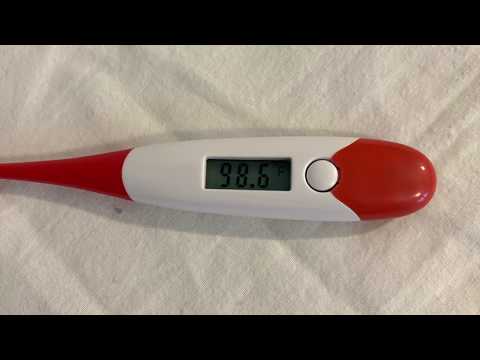Fever temp can be more than just an annoying symptom; it’s a crucial indicator of the body working hard to fight off illness. When temperatures rise, it often signals an infection or illness that demands attention. Understanding fever’s role and knowing when it signifies something serious can empower you to act quickly. Whether you’re in the gym crushing your fitness goals or enjoying a day out, being aware of your body’s signals helps you stay proactive about your health.
In this article, we’ll dive deep into key fever temp guidelines that enable you to discern when a fever is just an inconvenience and when it could point to something more dangerous. Whether you’re prepping for a workout or just going about your daily life, you need to listen to your body. Knowing the signs lets you combat health risks more effectively. So let’s get fueled up and tackle those fever temperatures!

Top 7 Fever Temp Guidelines for Identifying Serious Illness
When fever temps creep up, it’s essential to know what to look out for. Catching serious illness in time can make all the difference between a quick recovery and a long road to healing. Here’s a powerful list of top seven guidelines to help you identify when a fever may indicate something more significant:
A high fever can signal major infections like pneumonia or, in rare instances, conditions such as meningitis. If your temp hits that 103°F mark, you need to consult a healthcare professional, pronto. Don’t mess around when your body is sending out alarms!
If your fever sticks around for more than three days without any signs of improvement, seeking medical attention becomes a must. Persistent fevers can signal serious conditions, including types of cancer or infections like West Nile virus. We’re not in the business of taking chances with our health!
Pay attention if your fever comes hand-in-hand with more severe symptoms like a harsh headache, rash, stiff neck, or difficulty breathing. With conditions such as West Nile, fever can present alongside headaches and body aches. If these symptoms arise, it’s time to hit the doctor’s office quickly.
Special care needs to be taken if infants under three months show fever above 100.4°F (38°C) or in individuals over 65 or those with chronic illnesses like lupus. These groups face a higher risk of complications from infections. Their well-being matters, so watch closely!
If you or someone you know has a weakened immune system due to cancer treatments, chronic diseases, or other conditions, even a low-grade fever can signal a severe underlying issue. Quick medical intervention is vital here; don’t wait around!
Returning from international travels and experiencing fever showcases potential exposure to diseases like malaria or dengue. If you’re feeling under the weather after globetrotting, don’t hesitate to seek appropriate medical care. Your health is worth it.
Symptoms such as confusion, seizures, or altered consciousness alongside fever warrant immediate medical evaluation. These could indicate serious conditions like encephalitis. Your brain is your muscle; keep it healthy!

Fever Temp and Treatment Intersection: Exploring Herpes Cure and Lupus Treatments
Fever temp can also play a role in understanding specific illnesses and their treatment strategies. For instance, chronic herpes infections sometimes manifest with fever during flare-ups. Effective herpes cures include antiviral medications like Acyclovir, alongside lifestyle changes aimed at reducing recurrence. Don’t let fever put you down; knowledge is power!
Now, turning to lupus, treatment strategies often target minimizing fever spikes due to inflammation. Medications such as hydroxychloroquine help manage lupus effectively while reducing fever episodes and their potential complications. This proactive approach translates into avoiding the battles that leave you on the sidelines, and that’s what we want, right?
Understanding fever temp and its implications can point you toward better health management. Having effective treatments at your disposal empowers you to take charge. The quicker you act, the better your chances of staying in peak physical form.

Antisepsis: A Vital Process in Managing Fevers
When it comes to elevated fever temps, controlling infection spread is key. Antisepsis involves using measures that kill or inhibit pathogens, essential for handling fever-inducing illnesses. Basic hygiene practices such as frequent handwashing can be immensely effective in reducing infection incidence. Don’t underestimate the power of simple actions!
Using well-known antiseptics like Purell and Betadine, both in healthcare and homes, combats infection spread. In this age, your health prioritizes how you approach fever management. Be proactive rather than reactive!
By understanding fever temperatures and associated symptoms, you can be empowered to recognize serious illnesses and seek help in a timely manner. Don’t let fever-related fears overwhelm you. Knowledge transforms confusion into clarity, leading you on the path to a healthier, fitter life.
So, let’s remember that understanding our bodies and acting quickly can be the difference between minor setbacks and major obstacles. Whether you’re crushing your fitness goals or simply living life, prioritize your health. That way, you’re not just looking great with a ripped six-pack; you’re feeling fantastic, too!

Fever Temp: Fun Facts and Trivia You Didn’t Know

Understanding Fever Temp and Its Significance
When we talk about fever temp, it’s not just a number to glance at and move on; it actually reflects your body’s response to illness. Did you know that normal body temperature averages around 98.6°F (37°C)? However, it can fluctuate throughout the day depending on activity level, time of day, and even how well you’re hydrated. You might catch a little chill while lounging in a cozy lift chair recliner after a long day, which could skew your perception of fever. This intriguing temperature variation is basically your body’s way of telling you something’s up, so it’s wise to pay attention.
When to Seek Help: A Closer Look at Fever Temp
If your fever temp hits 103°F (39.4°C) or higher in adults, it’s time to take action. Serious infections and illnesses often kick off with such readings, requiring an urgent chat with your healthcare provider. Each degree above normal can make a big difference, increasing the urgency of the situation. And while you’re considering remedies, remember that soothing a sore throat can be a whole other issue, leading you to explore tips on how to soothe a sore throat. This could be particularly useful if you’re battling the flu alongside the fever.
Interesting Trivia on Fever Temp
Let’s sprinkle in some quirky trivia! Did you know that some cultures have believed that rising temperatures can unveil deeper truths about a person’s character? Fascinating, right? In the midst of our discussions on health and illness, it’s fun to think that fever temp could hold secrets beyond just a medical perspective. And speaking of unique experiences, have you ever tried pocket socks? They might sound trivial, but imagine your comfort level while recovering from a fever or a cold; little comforts can make all the difference.
Wrapping Up with Fever Temp Insights
In wrapping up, it’s interesting to note how fever temp isn’t just important medically, but it ties into various aspects of life and culture. We often find ourselves exploring different paths to relief and comfort, whether it’s diving into a good book on Comic Book Day or discussing heavy topics like bipolar disorder medications. Understanding fever and staying alert to its signals keeps you informed and ready to face whatever illness comes your way, all while enjoying life’s unexpected trivia. So, keep that thermometer handy and stay informed!



























